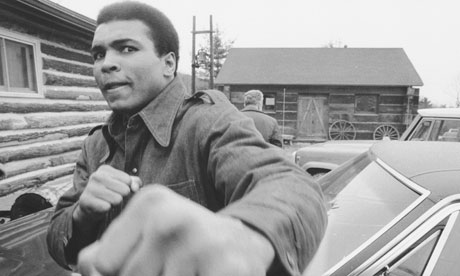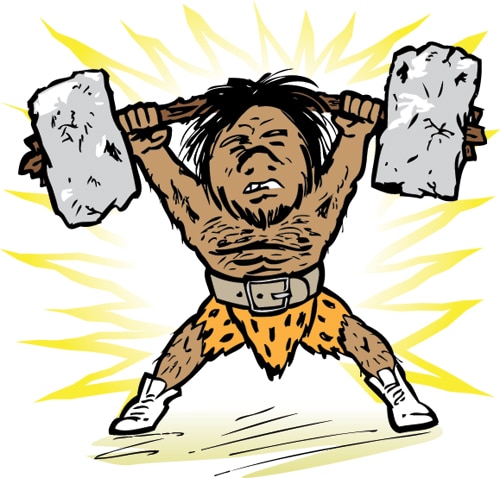I recently moved, and so switched to a new gym. But, before I left my old gym I had a really funny encounter. I noticed a guy whom I'd chatted with from time to time, giving me an awkward up and down, so I gave him a nod. He walked over to me, and told me that I'd gotten noticeably taller. I told him in my haphazard Chinese that at 28 years old, it seemed unlikely that I'd had a noticeable growth spurt. I mentioned that I'd been losing fat, and he agreed that I looked thinner, but urged me to go and check my height, guaranteeing that I'd gained a few centimeters. We agreed to disagree and the conversation turned to what I was doing to lose fat. He was shocked to hear that I never once stepped foot on a treadmill or went jogging. Those are the only real tried and tested ways to lose fat right?
It seems that many people are at a loss when it comes to challenging and fun ways to burn fat. I want to share my favorite fat loss workouts with you. These all take less than half an hour including a comprehensive warm up and cool down, and most take more like ten minutes. The principle for all of these workouts is that by exercising really intensely for a short time, you will increase your metabolic rate, and burn calories through something known as EPOC (Excess Post-exercise Oxygen Consumption) or the so called "after burn" effect. So here are five challenging and intense, but also fun workouts.
Sprints
I've mentioned sprints before, and truly believe that they are the best cardio possible. The only problem is that they suck. If you truly push yourself when doing sprints, you will probably finish within ten minutes, and will need to lay on the ground begging for oxygen for another ten minutes. To have a good sprint work out you have to warm up properly. If you don't, you WILL pull a muscle, I promise. Jog for five minutes, do some high knee raises, butt kicks, squat jumps, side shuffles, and then some stretches for your hip flexors, hamstrings, and calves. Pick a 40 or 50 meter path, and do two or three easy sprints, slowly increasing your speed. Once you feel ready to push yourself safely, do your first sprint. Keep the distance limited to 40 or 50 meters. Sprint, immediately walk back to the start, and go again. Do ten to fifteen sprints, gasp for air, walk for a few minutes and then go home. If you are feeling ambitious do ten burpees after each sprint, this is a great test of mental toughness.
Barbell Complexes
You are going to pick up a medium weight barbell and do three to ten different exercises without putting the bar down. The number of reps will be the same for each movement, and should be between five and ten. You will do all the reps on the first movement, then move on to the second movement. After completing all the movements rest thirty to sixty seconds and then go again. Repeat four or five times. The first time you try this only do three different movements, and add more as you see fit. The first time you will also want to be very conservative with the amount of weight you use. The first round might be easy, but by the time you've done five rounds it won't be. If you choose a weight that is too heavy, and the last round takes five minutes to complete because you keep dropping the bar, you have missed the point of this style of workout. Here are a couple of examples.
 Beginner
Beginner
Deadlift x 10
Power Clean x 10
Front Squat x10
Advanced
Deadlift x6
Shrug x6
Power Clean x6
Front Squat x6
Push Press x 6
Back Squat x6
You can program these yourself with a bit of common sense. Arrange the movements such that you are working from the floor to the roof, and if you want to really go for it, work your way back down to the floor again.
Bodyweight Conditioning
This has always been one of my favorites because it's just so easy to do. I often run out to the park, think of what I can use to workout, and then get at it. My favorite style of programming for park workouts is to choose four or five different movements, start at a certain number of reps, and then subtract one rep each round. For example
Round 1
Box Jumps x 12
Chin ups x 12
Lunges x12 per leg
Dips x 12
Round 2 is eleven reps of each, Round 3 is ten reps, etc. until you are down to only one rep. It seems like it would get easier as you go, but because each round is faster you get less time to rest before doing the same movement again. With this style, try not to rest between rounds if you can. Get out to the park, take a look at what you have to work with, and get at it.
Jump Rope

Muhammad Ali did it, I rest my case. This has been a main conditioning tool of successful athletes for a long time. If you can't jump rope efficiently now, just be patient. It really takes no time at all to get proficient enough to burn fat. My advice is to keep your elbows tucked as close to your body as you can, and really try to feel the tension on the rope. You should be able to do it with your eyes closed. When jumping rope for fat loss, intervals work really well. Jump rope for one minute, rest for thirty seconds, and go again. Repeat for ten to fifteen rounds. My favorite jump rope workout is one minute of rope work, followed by ten burpees, then straight back to the rope. You can replace the burpees with dumbell swings, jump squats, dumbell cleans, whatever you can think of. I think the jump rope with burpees may be almost as tough as hill sprints, if you can push yourself and avoid resting after the burpees. Catching your breath while jumping rope as fast as you can is intense.
Crossfit
Crossfit posts a new workout almost every day. Go on their website, find a workout that appeals to you, check the times that other people are completing the workouts in, and go beat those times. It can be humbling to see how fast some people are able to bang out some of the workouts on there. My only advice here would be to pick workouts that fit into your workout plan. If strength training, or building muscle is your goal and tomorrow is going to be a heavy squat day don't pick something that is going to fry your legs and prevent you from giving it your all on the squats. Remember your priorities.
This post ended up being far longer than I intended, but hopefully some of these ideas appeal to you, and have given you something new to work with. With this kind of training, intensity is the key. If these workouts take you longer than fifteen minutes (excluding warm up) then you are not going hard enough. As always, don't overthink this stuff. Go out and do something. You never know, something here may even make you taller, just like it did for me!

































